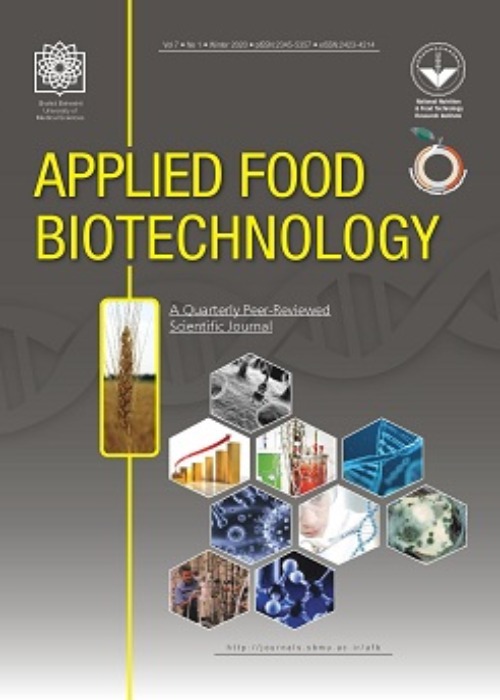Optimization of Gamma Aminobutyric Acid Production from Various Protein Hydrolysates by Lactiplantibacillus plantarum MCM4
Gamma aminobutyricacid is a non-protein amino acid with various physiological characteristics that is used as a synthetic supplement for healing anxiety, acute stress and sleeping disorders. Due to the demand for natural bioactive components, producing gamma aminobutyric acid enriched foods and supplements via biological methods has been popular in recent years.
In this study, one factor at a time approach was used to study effects of various protein hydrolysates, including soy protein isolate,whey protein concentrate and caseinat different concentrations (1-5% wv-1), fermentation time (24, 48 and 72 h)and inoculum size (1, 3 and 5% v v-1) on gamma aminobutyric acid synthesis. Then, the most effective parameters such as concentrationof soy protein hydrolysate, inoculum size and fermentation time at various levels were studied using central composite design based response surface methodology for gamma aminobutyric acid synthesis by Lactiplantibacillus plantarumMCM4.
Of various protein hydrolysates, soy protein hydrolysate was more appropriate for gamma aminobutyric acid synthesis. Moreover, higher gamma aminobutyric acid contents were achieved when soy protein with extended enzymatic hydrolysis for 6 h (soy protein hydrolysate6)was used as the substrate. The polynomial mathematic model could predict gamma aminobutyric acid synthesis successfully. Optimization using central composite design indicated that the maximum gamma aminobutyric acid synthesis yield (19.4 mg 100 ml-1) was achieved under the optimum conditions (fermentation time of 29 h, inoculum size of 3.65% v v-1and Soy Protein Hydrolysate 6 concentration of 3.9% w v-1). Overall,Lactobacillus plantarumMCM4 was suggested as a novel lactic acid bacteria species to produce gamma aminobutyric acid from inexpensive sources.
-
Antioxidant activity of sesame meal protein hydrolysate produced with fermentation by Bacillus species
Parisa Raei, *, Alireza Sadeghi Mahoonak, Ali Moayedi, Mahboobeh Kashiri
Food Science and Technology, -
Microencapsulation of Streptococcus thermophilus and Lactobacillus bulgaricus bacteria on the physicochemical and sensory properties of yogurt
Fatemeh Adinehpour*, Seid Mahdi Jafari, Alireza Sadeghi, , Soodabe Khalili
Food Science and Technology,



